
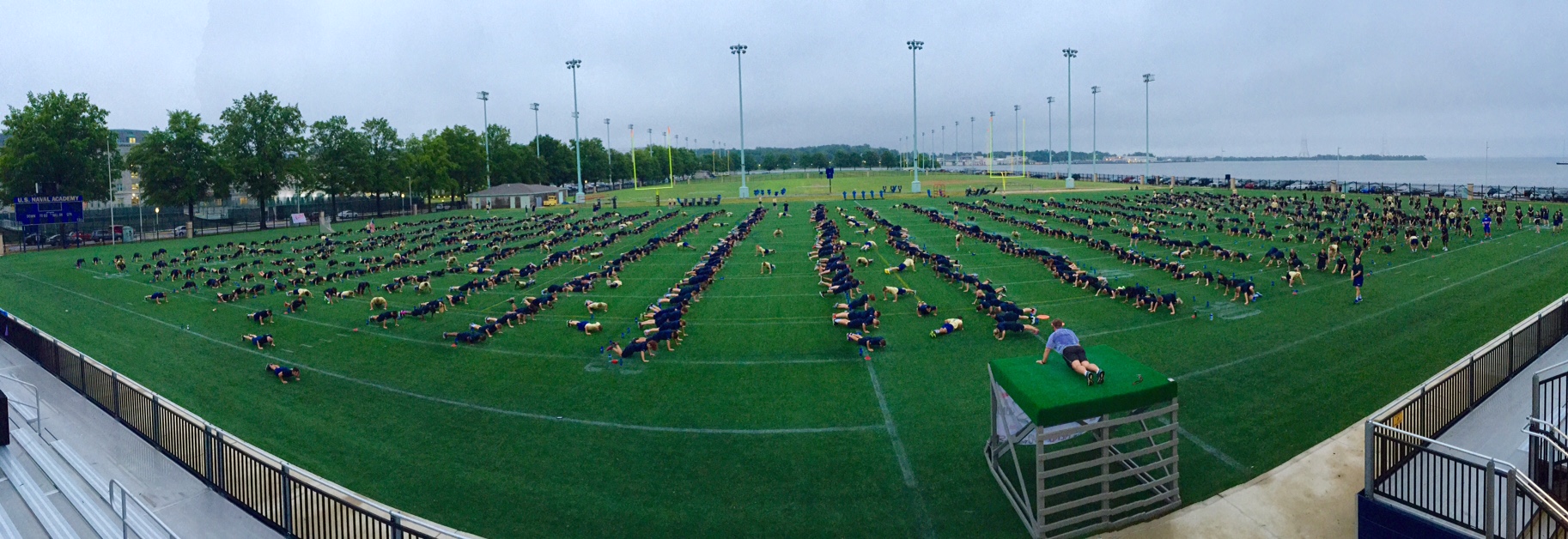
Preparing Americans to Serve in the Military, Special Ops, Police, & Fire Fighting
Meet
Stew |
Testimonials |
YouTube | Fitness Articles
|
Online
Coaching |
FREE Workouts | Catalog

Welcome, Contact us
| Military / Special Ops | Police / Fire Fighter | Beginner/Weight Loss | Published Books | More
Softcover Books (ebooks in softcover) |
Options to Become a Navy SEAL: How to get to BUD/S
All
roads to becoming a Navy SEAL, end at BUD/S - Basic Underwater
Demolition / SEAL Training. There are many routes to get to sunny
Coronado California where BUD/S is located, but the only way to become
a Navy SEAL is you have to finish BUD/S first. Below are the
several options SEAL wanna-be's struggle with and definitely should
know before signing any paperwork with the Navy: First Option - Join the Navy by
Enlisting This
is the route that will give you the best chance of attending SEAL
training as there are ten times more enlisted SEALs than there are
officers that attend SEAL training. The need for enlisted SEALs
will therefore always be higher than the need for officers in the
Teams. That is why the SEAL officer route is more
competitive. Here is the way to join the Navy and get to BUDS the
quickest. Many candidates attend BUD/s with college degrees
as enlisted with the hopes of going to Officer Candidate School (OCS)
later in their career. Step 1: Go to the Navy Recruiter Office. Choose a Spec
Ops/Spec War Source Rating
You will have to sign up for a regular Navy
Source Rating (designator - like GM gunners mate or OS operations
specialist) to join the Delayed Entry Program. Ask your local
recruiter about the Navy Special Warfare / Special Operations Mentor in
your area. These former SEAL, EOD, Divers are mentors for
recruits and their duties are to help recruits prepare for training by
giving regularly scheduled PSTs. You have to pass the PST with
your mentor in order to change your rate to SO. SO, or Special
Operator, will be your new designation.
However, you have
to pass the ELEVATED standards of the Navy SEAL Physical Screening Test
(PST), before you will get the opportunity to attend boot camp then
BUDS.. Below
are the minimum and recommended standards for the PST: How to Ace the PST
PST
Event
Minimum
Standards
Recommended
Standards
500 yd
swim
12:30
8-9
minutes
Pushups
50
80-100
Sit-ups
50
80-100
Pull-ups
10
15-20
1.5
mile timed run
10:30
in boots
9-10
minutes
As of 2011, Navy Special Warfare has instituted a "draft" similar to the NFL draft process - where the best candidates get selected first. The better your PST scores determines how soon you get to go to boot camp then BUDS, so achieving above (or beyond) the recommended standard is critical to your acceptance to go to SEAL training.
Step 2: Boot Camp Training
All recruits will report to Great Lakes Illinois to attend basic military training. During Boot Camp, you will be required to take and pass the Special Warfare / Operations PST again. If you pass at Boot Camp you are officially in the pre-training community - meaning you will get orders to attend BUDS.
Step 3: Pre-Training Phase (post Boot Camp and Pre-BUD/s Training
After Boot Camp, you will workout for a living and still live in Great Lakes. Your job is to learn about the Special Warfare Communities as well start an extensive physical training program for 6-8 weeks. The Pre-training program is to help candidates get into better shape as Boot Camp does not properly prepare a BUD/S student for their advanced training programs they will see in Coronado.
The Pre-training instructors are not interested in weeding anyone out at this point. The goal of this training is to teach candidates that they will not survive the next phase of training if they strive for the minimum standards in the PST. You will have to pass a new fitness test at PRE-BUDS:
1000-meter swim - with fins (22 minutes or faster)
Push-ups: at least 70 (2-minute time limit)
Pull-ups: at least 10 (2-minute time limit)
Curl-ups: at least 60 (2-minute time limit)
Four-mile run - with shoes + pants (31 minutes or under)
Continue to Step 4 of this article to see remaining training pipeline as it is the same for everyone after this point.
Option #2: Enlist and Serve in the Navy then Try Out for BUD/S
This is a longer route to BUD/S and applies to enlisted as well as officers in the Navy who want to attend BUD/S. It is also the same route a former BUD/S student who did not graduate will have to do IF he wants to try to attend BUD/S again.
Imagine yourself at your regular Navy command, working the day then adding in extra workouts at night to prepare for the BUD/s PST. This will be your life for a year or two or MORE. The ability to get above average PST scores is possible but it requires lots of extra effort on your part. It has been done before by many great enlisted and officers SEALs but it is a challenge and demonstrates your desire to go to BUD/S if you can get the recommended elevated scores on the PST while on active duty - especially if stationed on a ship.
You have to route a special request chit up your chain of command and have to wait until you time at your present command is completed before leaving for BUD/S. Many have arranged a deal to re-enlist in the Navy IF they can attend BUD/S at the time of the end of their first enlistment. Of course you still have to meet all of the elevated standards. See link for more details - http://www.sealswcc.com/navy-seals-in-navy.aspx
For the Fleet future BUD/S students there is a Pre-BUDS program as well. It is called the Fleet Transition Program where students get TAD orders to attend prior to attending BUD/S.
If you are in another service branch, you have to join the Navy to go to BUD/s. There is no such thing as joining the Marine Corp then going to BUD/S program. You can join the Marines - BUT you have to get out of the Marines and join the Navy to go to BUD/S. See link for more info:
http://www.sealswcc.com/navy-seals-other-service.aspx
Go to Step 4 below for the remaining steps of the BUD/S pipeline.
OFFICER ROUTES (SOAS)
| OFFICER SELECTION PROGRAM (SUMMER 2014) |
|
Starting
the Summer 2014, ALL officer candidates (USNA, ROTC, OCS) will get the
opportunity to test themselves at BUDS. What used to be called
mini-BUDS has been changed to an actual BUD/S Selection Program.
Mini-BUDS was more of a summer camp compared to BUD/S Selection
program as this program is not just a Midshipman Summer Cruise - it is
a selection and screening course. USNA and Navy ROTC Midshipmen,
qualified USAFA, or USMA cadets, and highly qualified OCS candidates
all train together and are constantly screened by BUD/S instructors.
The details of this program are limited and all candidates are
required to sign a non-disclosure agreement. Just know that you
will be tested in running, rucking, swimming, water skills, PT, log PT,
small boat drills, and many more events. You will be graded at
just about everything you do from push-ups to leadership skills.
Interviews, psychological evaluations, and the two weeks of daily
challenges will expose your personality, strengths, and weaknesses.
The BUD/S recruiters and Officer Community Manager will determine
who attends BUDS in the following months and candidates will learn
later in the Fall the same year. |
Options #3: Navy SEAL Officer
Programs: US Naval Academy
USNA to SEAL: First you have to get into the Naval
Academy - Annapolis MD - USNA.
See link for all
the details of that long process. Once at the Academy, you should
start training with like minded classmates as well as get to know the
older students who are training every day for BUD/S. There are
active duty SEALs to help with your training programs and will start
the screening process your junior year. You will take many PSTs
as well as have to endure BUD/S Screening - which is a 36 hour long
event that mixes in some of the worst events at BUD/s into a long
weekend at the Academy. This will determine your selection to the
new SOAS program (above).
Options
#4: Navy
SEAL Officer Programs: Reserve Officer Training Corps Going to college under a Navy ROTC program is another
route to get to BUD/s. Navy ROTC graduates have the opportunity
to attend BUD/S after graduation. ROTC gets typically 15-25
officer slots a year for SEAL training. These are nationwide
competitions among ALL ROTC programs in the nation. To say these
are competitive is an understatement. If you are an excellent /
above average candidate, you have a great chance at going to BUD/S. Your requirements are similar to that of USNA and OCS as
your grades, sports, leadership roles, and PST scores will all play a
part in your acceptance. See the Official ROTC website for what
colleges offer Navy ROTC. You will be required to take the PST
and interview in the Spring of your junior year and be selected to go
to SOAS. Go to Step 4 below for the remaining steps of the
BUD/S pipeline.
Usually by your senior year, the hundred or more classmates who thought
they wanted to be SEALs has dwindled down to 40-60, but they are all
highly qualified and only 20-30 slots each year. Your grades,
leadership jobs, sports / athletic events completed, foreign languages,
and even community service hours come into play into selection.
Go to Step 4 below for the remaining steps of
the BUD/S pipeline.
Options #5: Navy SEAL Officer Programs: Officer Candidate School - OCS
You need to have a college degree before applying to the OCS board. There are many opportunities military wide for young college grads seeking to lead in the military, however officer slots for any of the Special Forces units are few and hard to come by. In fact, latest numbers for SEAL officer candidates were about 1 in 8 get accepted to attend SEAL training after OCS.
Applying to Officer Candidate School and wanting to become a Navy SEAL means you will actually be selected to go to BUDS immediately after you complete OCS. You will be accepted to attend SEAL Officer Assessment and Selection training by a board of SEAL officers - then to OCS if they want you to attend BUDS in the future. See more info at
http://www.stewsmith.com/linkpages/NavySEALOCSProgram.htm
Go to Step 4 below for the remaining steps of the BUD/S pipeline.
Step 4: Navy SEAL Training (BUD/S) PTRR and INDOC
Once you arrive at BUD/S you will join PTRR (Physical Training Rehabilitation and Remediation) for a few weeks until the next INDOC class forms. BUD/S Indoctrination Phase (INDOC or BO) is a challenging 5-6 week training to thoroughly test the students in all the basics from the PST (again!), swimming with fins, obstacle courses, timed beach runs, as well as challenging PTs on the Grinder, and of course - surf zone training. Once you have passed the challenges of INDOC and not quit after the instructors personally test your desire, you get the opportunity to advance to Phase 1.
Step 5: Phase 1,2,3 at BUD/S
Now training begins at First Phase. This is where most BUD/S students quit or get injured. This phase is where you will meet challenges regularly such as four mile timed beach runs, 2 mile ocean swims, BUD/S obstacle course, log PT, hundreds of reps of pushups, pullups, and ab exercises. Drown-proofing, life saving, and underwater knot tying are also challenging tests you must pass to continue training. Of course there is Hell Week, which is a 120 hour long event designed to test your desire to be a Navy SEAL. You may sleep a total of 3-4 hours in five days and log more than 200 miles of running, swimming, carrying logs, and paddling boats. This phase is the ultimate test of your ability to be a team player - whether you are under a log or boat, you will quickly learn who you want on your team.
Phase 2 is Dive Phase. You should have a basic understanding of SCUBA diving prior to attending though it is not a requirement to be SCUBA qualified. You will be required to use Algebra to solve diving math problems as well diving physics. The most important laws to know in Navy SEAL diving are Boyle's Law and Dalton's Law of Partial Pressure. You will learn open-circuit SCUBA and closed circuit (oxygen re-breathers) in Dive Phase as well as one of the most challenging tests at BUDS - POOL COMPETENCY. This test is designed to teach and test your ability to remain calm in the event of everything going wrong underwater. You will also swim a six mile ocean swim during this phase.
Phase 3 is Land Warfare. You will
enjoy shooting, learning and using demolitions such as C-4 as well as
patrolling, shooting and moving, and land navigation. This phase
is full of potential safety violations so be careful where you point
your weapon, have weapon on safe when not in use, as well as many other
potential dangers that involve demolition and marksmanship. The
PT, runs, and swims do not get easier - in fact, you will be in your
best shape ever during third phase and able to run 10-15 miles, swim
3-4 miles, and ruck 20 miles when on San Clemente Island.
Congratulations - you have finished BUD/S but your SEAL training is not over - just the Basics is over.
SQT - After BUD/S graduation, you go to SQT - SEAL Qualification Training. SQT is advanced training program that takes the individual who graduated BUD/S and forms a TEAM that is capable of operating in the water, underwater, from planes and helicopters, ropes and parachutes, boats, and on foot. You will learn and master the basic insertion methods used by SEALs and conduct training missions. There is also a mix of many hours of classroom training where you learn about intelligence gathering, designing missions, and moving together as a team from insertion to extraction of a mission.
Now after BUD/S and SQT, you get to go to the SEAL Team that selected you and become a "new guy" and prove yourself all over again to the veteran SEALs you will be joining on combat deployments. You will continue to learn something new each day of your career so stay in "receive mode" and listen to those who have been there and done that.
**Many people ask about SEAL Team Six lately. You cannot try out for
this team for FIVE Years as an active SEAL at a Team - so do not worry
about this step until you get passed a few SEAL deployments.**
Make sure you THOROUGHLY study the Navy SEAL Website if this is a future occupation for you. Do your homework.
Stew Smith CSCS - If you have any questions, feel free to email me at stew@stewsmith.com.
Tactical
Fitness - Featuring the Dirty Dozen
| More
Info
The Navy SEAL Weight Training Workout | More
info
Complete Guide to Navy SEAL Fitness
|
More Info
Maximum Fitness
|
More Info
The Special Operations Workout
|
More Info
The SWAT Workout - From Recruit to SWAT
|
More Info

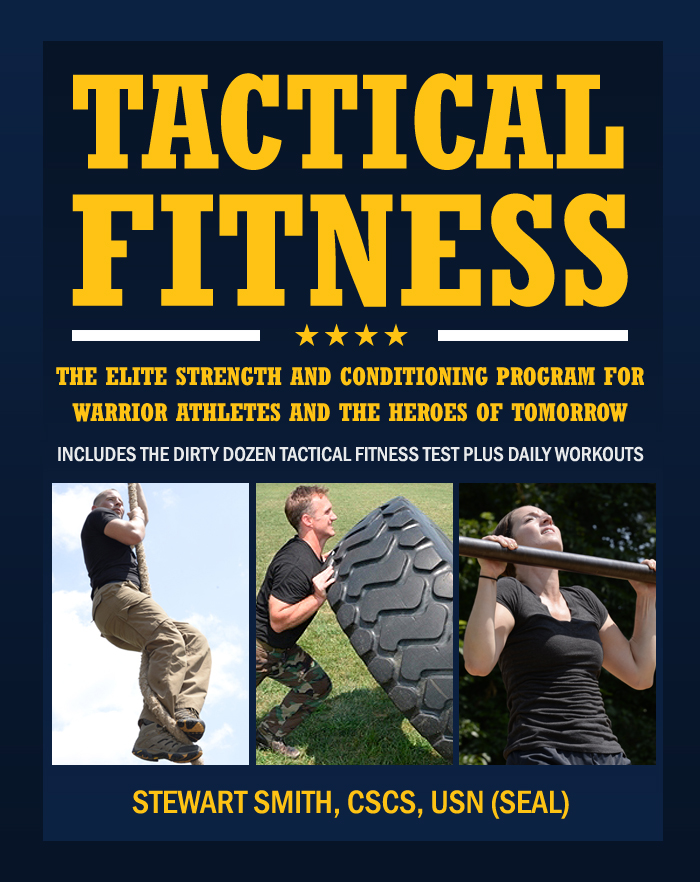
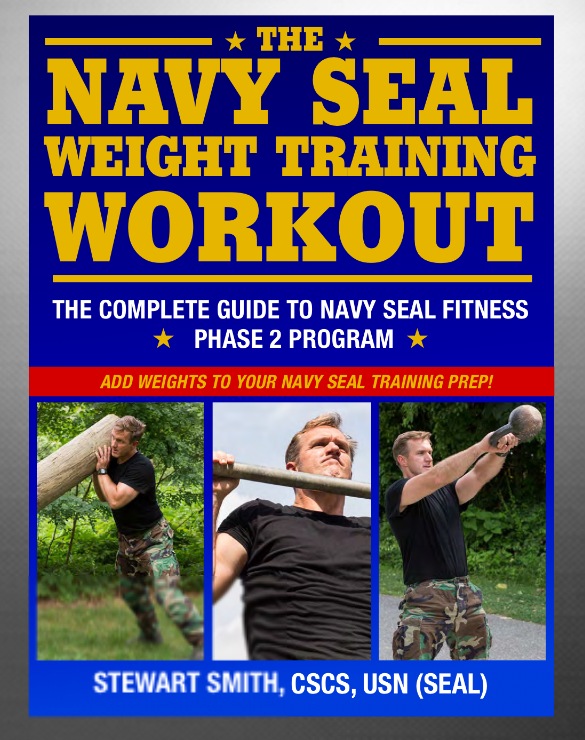
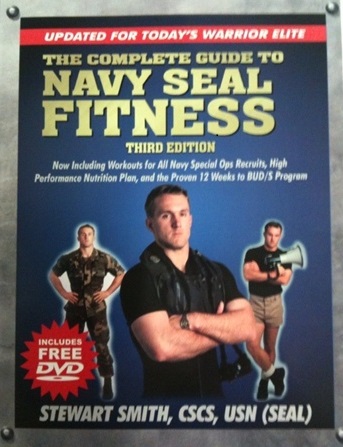

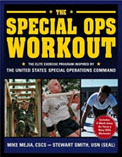

 Stew
Smith is a former Navy SEAL, Military.com Fitness Contributor and
certified as a Strength and Conditioning Specialist (CSCS) with the
National Strength and Conditioning Association. If you are interested
in starting a workout program to create a healthy lifestyle - check out
the StewSmith.com
Stew
Smith is a former Navy SEAL, Military.com Fitness Contributor and
certified as a Strength and Conditioning Specialist (CSCS) with the
National Strength and Conditioning Association. If you are interested
in starting a workout program to create a healthy lifestyle - check out
the StewSmith.com 


